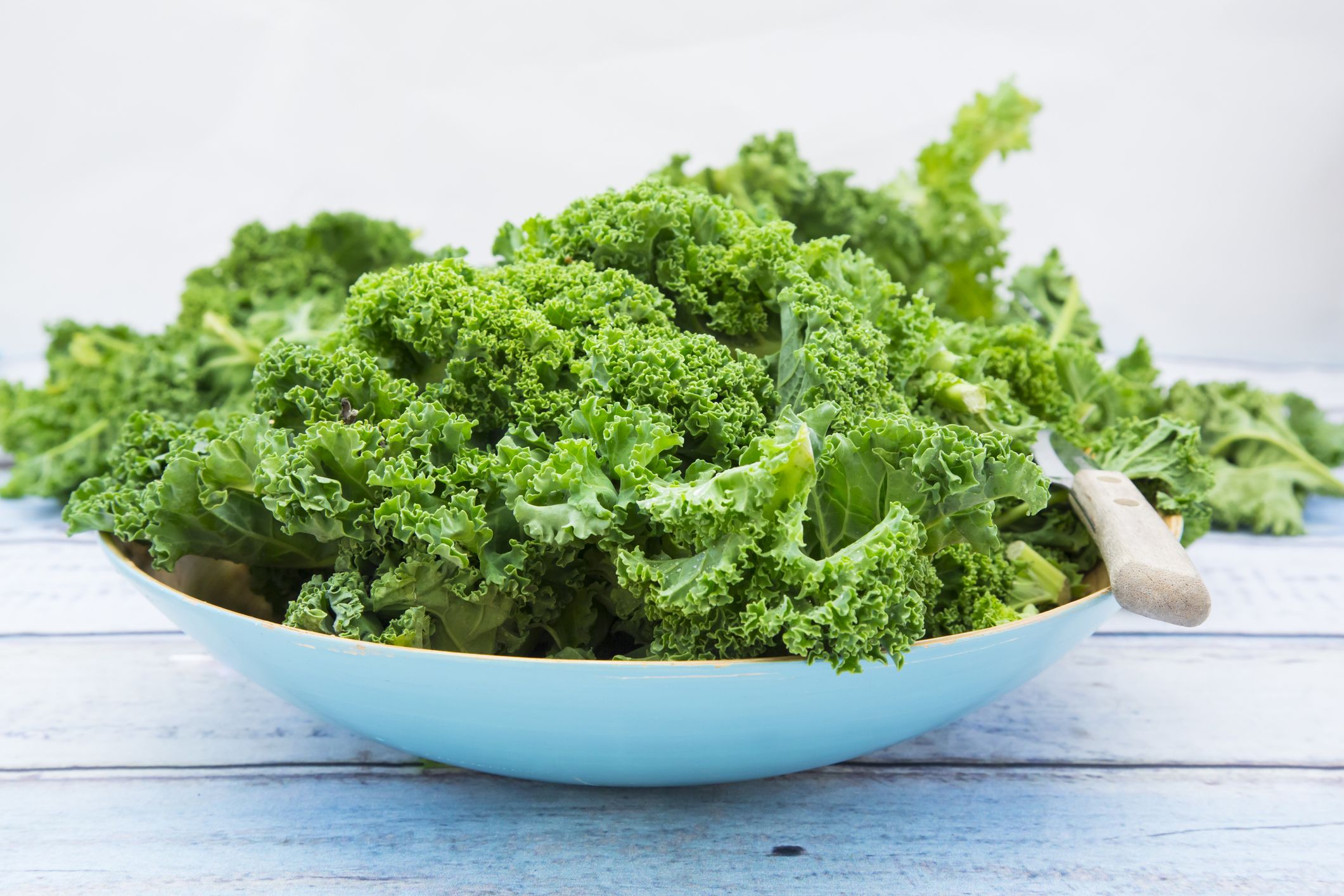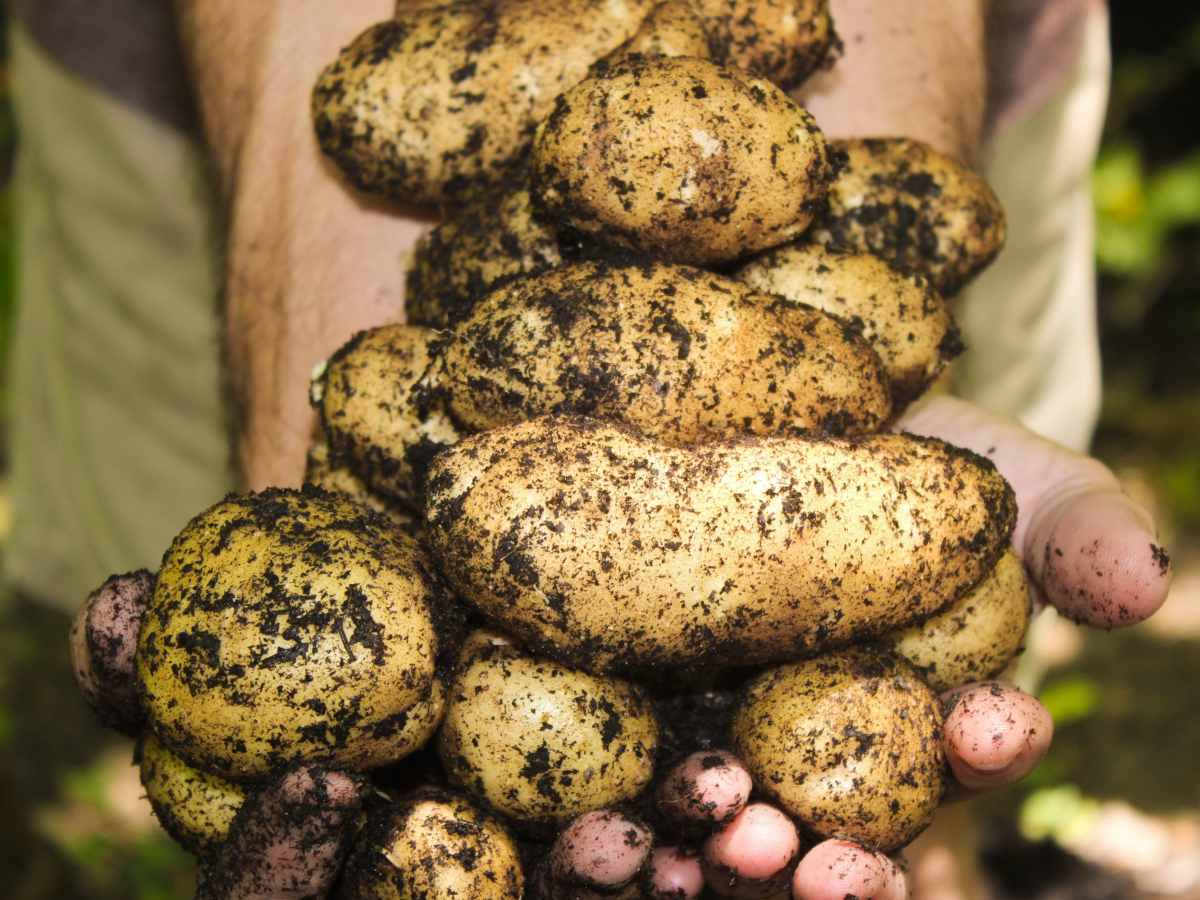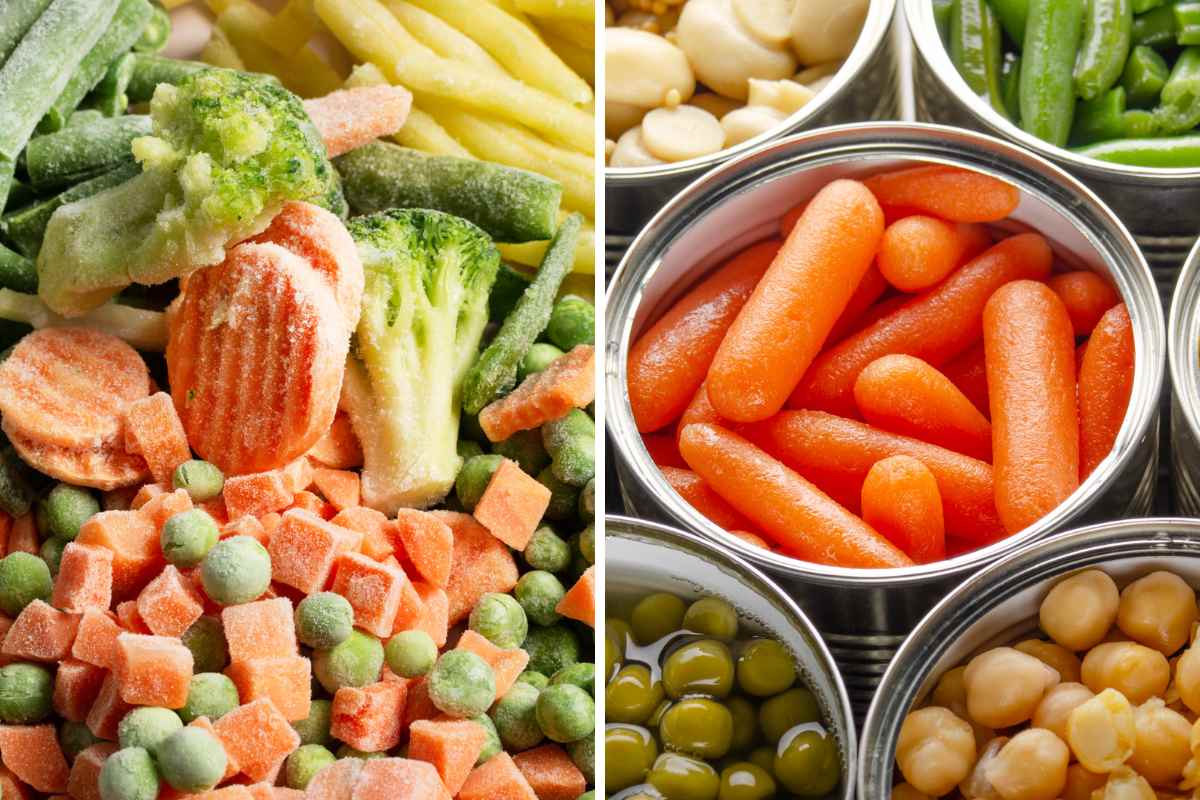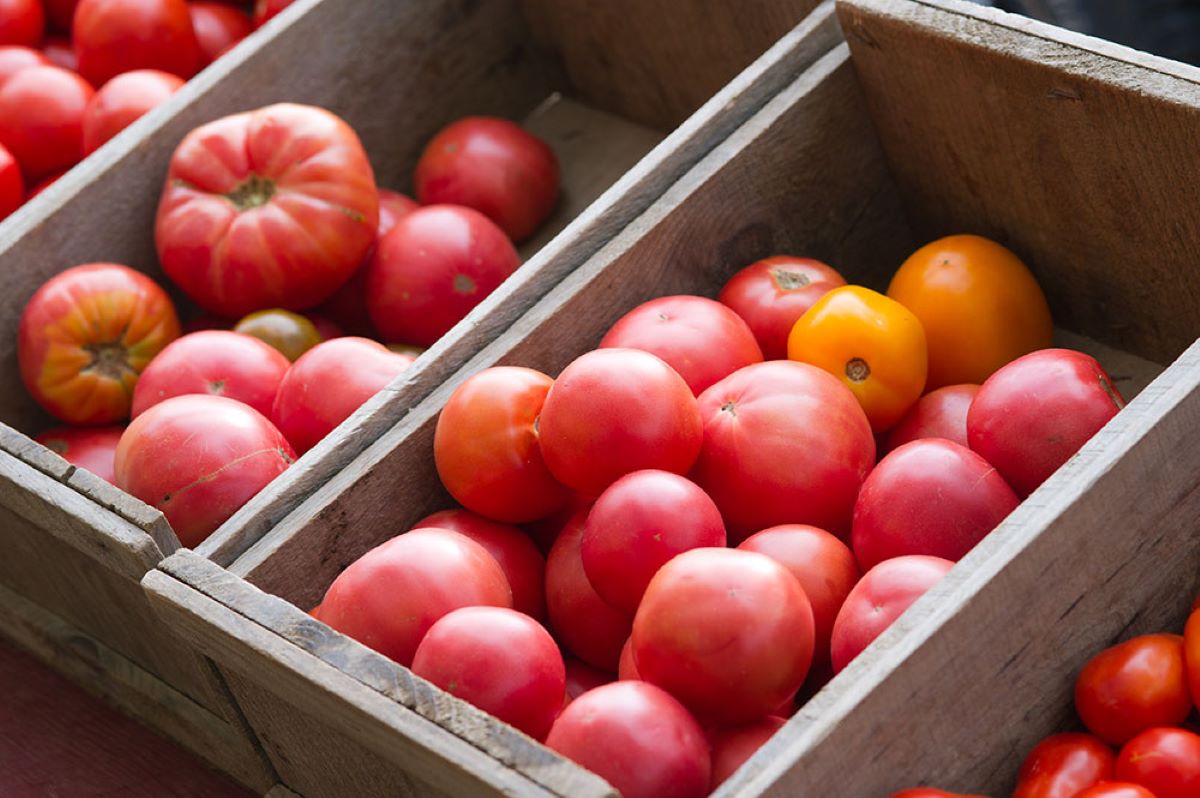Home>Gardening News and Trends>Latest News>Which Vegetables Should Be Avoided In Diabetes
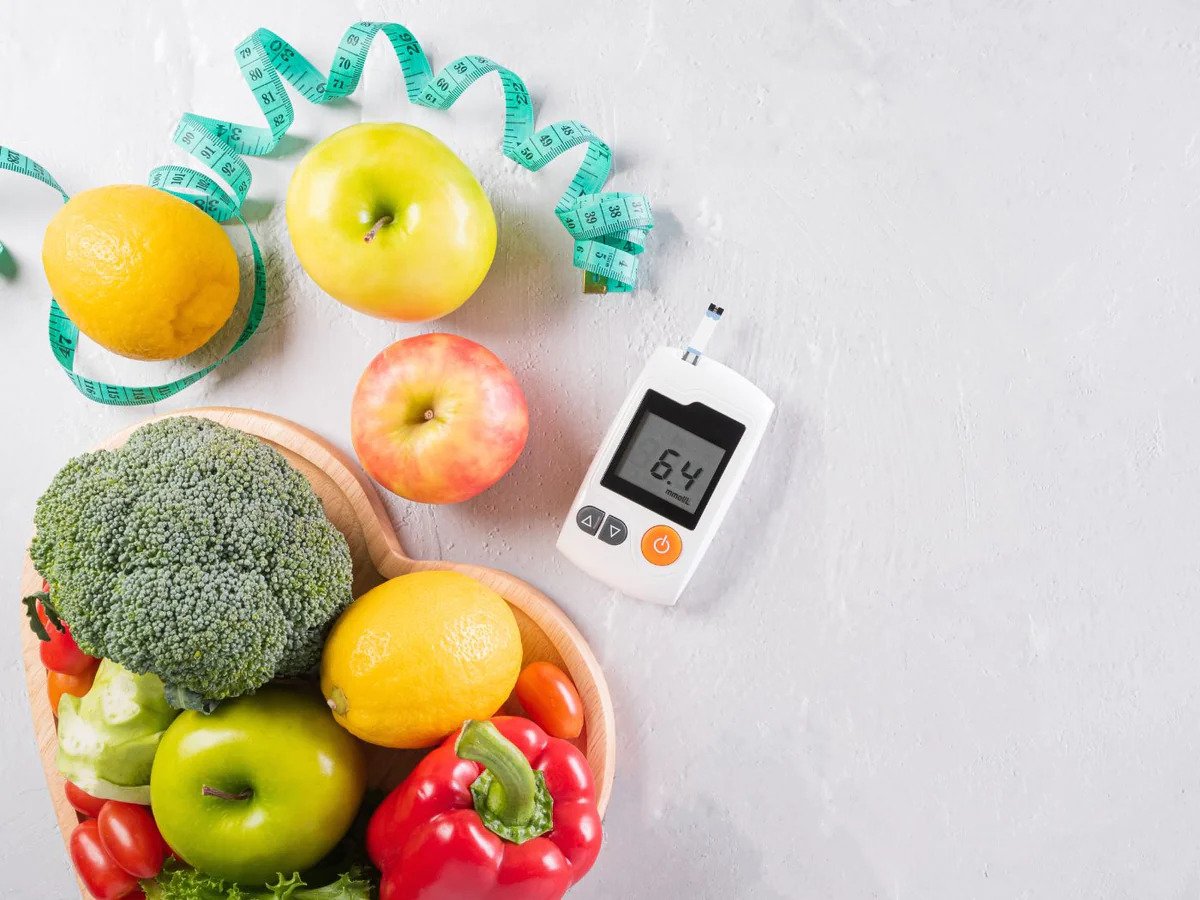

Latest News
Which Vegetables Should Be Avoided In Diabetes
Published: October 6, 2023
Discover the Latest News on Which Vegetables Should Be Avoided in Diabetes. Get expert advice on managing your diet and maintaining optimal blood sugar levels.
(Many of the links in this article redirect to a specific reviewed product. Your purchase of these products through affiliate links helps to generate commission for Chicagolandgardening.com, at no extra cost. Learn more)
Table of Contents
Introduction
Welcome to our comprehensive guide on managing diabetes through a healthy diet. One of the key components of a balanced diabetic diet is consuming a variety of vegetables. However, not all vegetables are created equal when it comes to diabetes management. Understanding which vegetables to avoid is just as important as knowing which ones to incorporate into your diet.
Diabetes is a chronic condition characterized by high levels of blood sugar. It occurs when the body either doesn’t produce enough insulin or cannot effectively use the insulin it produces. Maintaining stable blood sugar levels is crucial for managing diabetes and reducing the risk of complications.
A well-rounded diet that includes vegetables can provide essential nutrients, fiber, and antioxidants while minimizing calorie intake. However, some vegetables may have a higher impact on blood sugar levels due to their carbohydrate content. For individuals with diabetes, it is important to be mindful of the types and quantities of vegetables consumed to prevent unnecessary spikes in blood sugar.
In this guide, we will explore the role of vegetables in diabetes management and highlight the vegetables that should be avoided or consumed in moderation. Please note that while these vegetables have a higher impact on blood sugar levels, they can still be enjoyed occasionally and in moderation as part of a well-balanced meal plan.
Understanding Diabetes
Diabetes is a complex metabolic disorder that affects millions of people worldwide. It occurs when the body either cannot produce enough insulin or cannot effectively use the insulin it produces. Insulin is a hormone that regulates the amount of sugar (glucose) in the bloodstream and allows it to enter the body’s cells for energy.
There are two main types of diabetes: type 1 and type 2. Type 1 diabetes is an autoimmune disease in which the immune system mistakenly attacks and destroys the insulin-producing cells in the pancreas. People with type 1 diabetes require daily insulin injections or the use of an insulin pump to manage their blood sugar levels.
Type 2 diabetes is the most common form of diabetes and is typically characterized by insulin resistance. This means that the body’s cells become resistant to the effects of insulin, leading to a buildup of sugar in the bloodstream. Type 2 diabetes can be managed through lifestyle changes, including diet and exercise, or with the help of medication or insulin therapy.
Uncontrolled diabetes can have serious health consequences, including heart disease, kidney damage, nerve damage, and vision problems. It is crucial for individuals with diabetes to actively manage their condition to prevent complications and maintain overall health.
One of the key components of managing diabetes is adopting a healthy diet. A balanced diet that includes a variety of nutritious foods can help regulate blood sugar levels, improve insulin sensitivity, and provide essential nutrients for overall health and well-being.
Next, we will delve into the role of vegetables in diabetes management and explore which ones should be avoided or consumed in moderation.
Role of Vegetables in Diabetes Management
When it comes to diabetes management, vegetables play a vital role in promoting overall health and controlling blood sugar levels. Vegetables are low in calories and high in nutrients, making them an excellent choice for individuals with diabetes.
Firstly, vegetables are rich in fiber, which helps slow down the digestion and absorption of carbohydrates. This, in turn, leads to a gradual rise in blood sugar levels rather than a sudden spike. Fiber also promotes feelings of fullness, which can aid in weight management and prevent overeating.
In addition to fiber, vegetables also contain an array of essential vitamins and minerals. These nutrients are crucial for supporting the body’s various functions and maintaining overall health. Antioxidants found in vegetables, such as vitamins A and C, protect cells from damage caused by unstable molecules called free radicals, which can contribute to chronic diseases like diabetes. Eating a variety of vegetables ensures that you are getting a wide range of these beneficial nutrients.
Another benefit of incorporating vegetables into your diabetic diet is their low glycemic index (GI). The glycemic index measures how quickly a food raises blood sugar levels. Vegetables with a low GI release glucose slowly into the bloodstream, helping to maintain stable blood sugar levels. This makes them an excellent choice for individuals with diabetes who need to manage their blood sugar levels effectively.
Furthermore, vegetables are naturally low in fat and cholesterol, making them heart-healthy choices for individuals with diabetes. Heart disease is a common complication of diabetes, so it is crucial to prioritize heart health by consuming a diet rich in vegetables and other nutrient-dense foods.
Now that we understand the important role vegetables play in diabetes management, let’s explore the specific vegetables that should be avoided or consumed in moderation to maintain stable blood sugar levels.
Vegetables to Avoid in Diabetes
While vegetables are generally a healthy addition to a diabetic diet, there are certain vegetables that may have a bigger impact on blood sugar levels and should be consumed in moderation or avoided altogether. Here are some vegetables to be cautious of if you have diabetes:
- Potatoes: Potatoes, whether white or sweet, have a high glycemic index and can cause a rapid spike in blood sugar levels. It’s best to limit or avoid regular potatoes and opt for healthier alternatives like cauliflower or rutabaga as substitutes.
- Corn: Corn is another starchy vegetable that can raise blood sugar levels quickly due to its high carbohydrate content. Additionally, corn is often processed into less healthy forms, such as corn syrup or corn chips. To manage blood sugar, consider limiting your consumption of corn or opting for lower-carb vegetables like broccoli or green beans.
- Beets: While beets are a nutritious vegetable, they contain natural sugars and have a moderately high glycemic index. If you enjoy eating beets, it’s advisable to consume them in smaller portions and balance them with other low-glycemic vegetables.
- Peas: Peas are relatively high in carbohydrates, which can cause a rapid increase in blood sugar levels. If you choose to include peas in your meals, aim for smaller servings and pair them with non-starchy vegetables.
- Squash: Although squash varieties like butternut or acorn squash are packed with vitamins and fiber, they are also higher in carbohydrates. Moderation is key when consuming squash, especially for individuals with diabetes. Consider balancing your plate with other low-glycemic vegetables.
- Carrots: Carrots are a root vegetable that contains natural sugars and can impact blood sugar levels, especially when consumed in large quantities. It’s still possible to enjoy carrots in moderation, but it’s essential to be mindful of portion sizes.
- Parsnips: Parsnips, a root vegetable similar to carrots, have a higher starch content and can raise blood sugar levels. If you choose to include parsnips in your meals, aim for smaller portions and pair them with non-starchy vegetables to help regulate blood sugar.
Remember, the key is moderation. While these vegetables may have a higher impact on blood sugar levels, they can still be enjoyed in smaller quantities alongside other low-glycemic vegetables and balanced meals.
Potatoes
Potatoes are a beloved vegetable enjoyed in various forms, but they can significantly impact blood sugar levels due to their high carbohydrate content. Whether they are white potatoes or sweet potatoes, both varieties have a high glycemic index (GI) rating, meaning they cause a rapid rise in blood sugar levels after consumption.
White potatoes, such as Russet or Yukon Gold, are particularly high in starch, which is quickly broken down into glucose and absorbed into the bloodstream. This can lead to a sharp spike in blood sugar levels, making them a vegetable to be cautious of if you have diabetes.
Sweet potatoes, while often considered a healthier alternative, also have a relatively high GI. However, they are slightly lower on the glycemic index compared to white potatoes. This is mainly due to their higher fiber content, which helps slow down the absorption of glucose.
If you have diabetes, it is important to manage your blood sugar levels by limiting or avoiding regular potatoes. Instead, consider exploring healthier alternatives like cauliflower or rutabaga. Cauliflower can be mashed or roasted to mimic the texture of mashed potatoes, while rutabaga can be cubed and roasted for a satisfying side dish.
Additionally, it’s important to pay attention to how potatoes are prepared. Fried potato dishes like French fries or potato chips are high in unhealthy fats and can significantly increase calorie intake. Instead, opt for healthier cooking methods like baking or boiling potatoes and enjoy them in moderation as part of a balanced meal.
Remember, moderation is key. If you choose to include potatoes in your meal plan, consider portion sizes and balance them with other low-glycemic vegetables, lean proteins, and healthy fats to help regulate blood sugar levels and maintain a balanced diet.
Corn
Corn is a popular vegetable enjoyed in various forms, but it is important to be cautious of its impact on blood sugar levels, particularly if you have diabetes. Corn is considered a starchy vegetable, meaning it contains a relatively high amount of carbohydrates that can cause blood sugar levels to rise quickly.
One of the reasons corn can have a significant impact on blood sugar is its high glycemic index (GI) rating. The GI measures how quickly a carbohydrate-containing food raises blood sugar levels. Foods with a high GI are rapidly digested and absorbed, causing a rapid spike in blood sugar.
Furthermore, corn is often processed into less healthy forms, such as corn syrup or corn chips. These processed forms may contain added sugars or unhealthy fats, which further contribute to blood sugar fluctuations and potential weight gain.
While corn can still be enjoyed in moderation, it is important to be mindful of portion sizes. For individuals with diabetes, it’s advisable to limit consumption or choose lower-carbohydrate vegetables to help manage blood sugar levels more effectively.
If you enjoy corn but want to keep your blood sugar in check, consider opting for smaller portions and pairing it with other non-starchy vegetables for a more balanced meal. You can also explore alternative vegetables like broccoli, green beans, or Brussels sprouts, which have a lower impact on blood sugar levels.
When preparing corn, avoid adding additional sugars or unhealthy fats. Grilling or boiling corn without added butter or salt can help retain its natural flavors while keeping the calorie and carbohydrate content lower.
It’s important to remember that everyone’s response to carbohydrates may vary, so it may be helpful to monitor your blood sugar levels after consuming corn to determine your individual tolerance.
In summary, while corn can be enjoyed in moderation, it is essential to be mindful of its impact on blood sugar levels. Opt for smaller portions, balance it with non-starchy vegetables, and avoid processed forms of corn to maintain stable blood sugar levels and achieve a well-rounded diabetic diet.
Beets
Beets are a colorful and nutritious vegetable that can provide numerous health benefits. However, if you have diabetes, it’s important to consume beets in moderation due to their natural sugar content.
Beets contain natural sugars, which can cause a moderate increase in blood sugar levels when eaten in larger quantities. They have a moderately high glycemic index (GI), meaning they can cause a rapid rise in blood sugar levels.
Despite their sugar content, beets offer a range of beneficial nutrients, including fiber, vitamins, and minerals. They are a good source of folate, which is important for cell growth and development, as well as potassium, which helps regulate blood pressure.
If you enjoy the taste and nutritional benefits of beets, there are ways to include them in your diabetic meal plan without causing significant blood sugar spikes. One approach is to consume beets in smaller portions, along with other low-glycemic vegetables, lean proteins, and healthy fats.
Additionally, consider balancing your plate by incorporating other low-glycemic vegetables, such as leafy greens, broccoli, or cucumbers, to help slow down the absorption of glucose from beets.
The method of preparation can also affect the impact on blood sugar levels. Roasting or steaming beets without adding additional sugars or unhealthy fats can help retain their natural flavor and nutritional content while minimizing the overall carbohydrate load.
Individual responses to beets may vary, so it’s important to monitor your blood sugar levels after consuming them to determine your personal tolerance. Consult with your healthcare provider or a registered dietitian for personalized advice on incorporating beets into your diabetic meal plan.
In summary, while beets have natural sugars and a moderate impact on blood sugar levels, they can still be enjoyed in moderation as part of a well-balanced diabetic diet. Consume beets in smaller portions, pair them with non-starchy vegetables, and focus on overall meal balance to manage your blood sugar effectively.
Peas
Peas are a versatile and nutritious vegetable that can be enjoyed in various dishes. However, if you have diabetes, it’s important to be cautious of their impact on blood sugar levels due to their relatively high carbohydrate content.
Peas are considered a starchy vegetable, meaning they contain a higher amount of carbohydrates compared to non-starchy vegetables. As a result, they can cause a rapid increase in blood sugar levels when consumed in larger quantities.
Despite their higher carbohydrate content, peas offer several health benefits. They are a good source of dietary fiber, which can help slow down the absorption of glucose and support digestive health. Peas also provide important vitamins, minerals, and antioxidants that contribute to overall well-being.
When incorporating peas into your diabetic meal plan, it’s important to consider portion sizes. Aim to include smaller servings of peas alongside non-starchy vegetables, lean proteins, and healthy fats to help balance the overall carbohydrate load of your meal.
Pairing peas with foods high in protein and healthy fats can further slow down the digestion and absorption of carbohydrates, which can help regulate blood sugar levels more effectively.
Additionally, be mindful of the cooking methods and avoid adding unhealthy fats or excessive amounts of sodium. Steaming or lightly sautéing peas can help retain their nutritional value while minimizing the impact on blood sugar levels.
Everyone’s response to carbohydrates may vary, so it’s important to monitor your blood sugar levels after consuming peas to assess your personal tolerance. If you find that peas cause significant spikes in your blood sugar, consider reducing your portion sizes or opting for lower-carbohydrate vegetable alternatives, such as broccoli or green beans.
In summary, peas can still be enjoyed in moderation as part of a balanced diabetic diet. Be mindful of portion sizes, pair them with other nutritious foods, and monitor your blood sugar levels to individualize your meal plan and maintain stable blood sugar control.
Squash
Squash is a versatile and nutritious vegetable that comes in various varieties such as butternut, acorn, or spaghetti squash. While squash can be a healthy addition to a diabetic meal plan, it’s important to be mindful of its impact on blood sugar levels, especially if consumed in large quantities.
Squash, particularly winter squash varieties, have a higher carbohydrate content compared to non-starchy vegetables. This means that they can cause a relatively faster increase in blood sugar levels when consumed in larger portions.
However, squash is also packed with essential vitamins, minerals, and dietary fiber, making it a valuable part of a balanced diet. It provides important nutrients like vitamin A, vitamin C, and potassium that contribute to overall health and well-being.
If you have diabetes, it’s important to consume squash in moderation and balance it with other low-glycemic vegetables to help regulate blood sugar levels more effectively.
One approach is to focus on smaller portion sizes of squash as part of your meal. By limiting the amount of squash consumed, you can still enjoy its taste and nutritional benefits while minimizing the impact on blood sugar levels. Pairing it with non-starchy vegetables, lean proteins, and healthy fats can help further stabilize blood sugar levels and promote balanced nutrition.
When preparing squash, opt for cooking methods that don’t involve adding excessive fats or sugars. Roasting or steaming squash without added butter or sugary sauces can help retain its natural flavor and nutritional value without significantly increasing calorie or carbohydrate intake.
It’s important to note that individual responses to squash can vary. Some people may find that they can tolerate larger portions of squash without significant alterations in blood sugar levels, while others may need to be more cautious. Monitoring your blood sugar levels after consuming squash can help you identify your personal tolerance and make adjustments accordingly.
In summary, squash can be enjoyed in moderation as part of a well-balanced diabetic diet. Be mindful of portion sizes, pair it with other non-starchy vegetables, and choose healthy cooking methods to help maintain stable blood sugar levels and achieve overall nutritional balance.
Carrots
Carrots are a popular and nutritious root vegetable known for their vibrant color and crunchy texture. While carrots are generally considered a healthy choice, they contain natural sugars that can impact blood sugar levels, especially when consumed in large quantities.
Carrots are rich in fiber, vitamins, and minerals, including beta-carotene, which is converted into vitamin A in the body. They also provide antioxidants that are beneficial for overall health. However, their natural sugar content can cause a moderate increase in blood sugar levels.
If you have diabetes, it’s important to consume carrots in moderation and be mindful of portion sizes to help regulate blood sugar levels. Balancing carrots with other non-starchy vegetables and sources of protein and healthy fats can also help stabilize blood sugar levels.
When incorporating carrots into your meal plan, it’s essential to practice portion control. Instead of consuming large amounts of carrots, aim for smaller servings and distribute your carbohydrate intake across your meals and snacks throughout the day.
Additionally, selecting raw or lightly steamed carrots can be a healthier option compared to consuming them in more processed forms, such as carrot juice or purees. Juicing carrots can remove the fiber and concentrate the natural sugars, leading to a quicker spike in blood sugar levels.
It’s worth noting that cooking carrots can actually enhance their nutritional benefits by breaking down their tough cellular structure, making nutrients more bioavailable to the body.
While carrots have a moderate impact on blood sugar levels, their overall nutritional value makes them a valuable addition to a diabetic diet. They can provide essential vitamins, minerals, and fiber, so it’s advisable to include them as part of a varied and balanced meal plan.
Consulting with a registered dietitian or healthcare provider can provide personalized guidance and recommendations based on your specific dietary needs and blood sugar control goals.
In summary, carrots can be enjoyed in moderation as part of a healthy diabetic diet. Be mindful of portion sizes, balance them with other non-starchy vegetables, and consider the cooking methods used to optimize their nutritional value and impact on blood sugar levels.
Parsnips
Parsnips are a root vegetable that closely resembles carrots in appearance. While they offer numerous health benefits, individuals with diabetes should approach parsnips with caution due to their higher starch content, which can impact blood sugar levels.
Parsnips are a rich source of dietary fiber, vitamins, and minerals. They provide important nutrients like vitamin C, potassium, and folate, which are beneficial for overall health. However, their high starch content causes them to have a relatively higher glycemic index (GI) compared to non-starchy vegetables.
If you have diabetes, consider consuming parsnips in smaller portions and balancing them with other low-glycemic vegetables, lean proteins, and healthy fats. This can help slow down the digestion and absorption of carbohydrates, preventing rapid spikes in blood sugar levels.
When incorporating parsnips into your diabetic meal plan, it’s important to practice portion control. Instead of making parsnips the predominant part of your meal, aim for smaller servings and diversify your plate with non-starchy vegetables and other nutritious ingredients.
Consider alternative cooking methods like roasting or steaming parsnips, as this can help retain their nutritional value while minimizing the impact on blood sugar levels. Avoid adding excessive fats or sugars during the cooking process.
Every individual’s response to carbohydrates may vary, which is why it’s important to monitor your blood sugar levels after consuming parsnips. This will help you determine your personal tolerance and make necessary adjustments to your meal plan accordingly.
It’s advisable to consult with a registered dietitian or healthcare provider who can provide personalized guidance and recommendations based on your specific dietary needs and blood sugar control goals.
In summary, parsnips can still be enjoyed in moderation as part of a healthy diabetic diet. Be mindful of portion sizes, pair them with other low-glycemic vegetables, and choose healthy cooking methods to help regulate blood sugar levels and achieve balanced nutrition.
Conclusion
Managing diabetes requires careful attention to the types and quantities of food we consume, including vegetables. While vegetables are an essential part of a healthy diet, it is important to be mindful of their impact on blood sugar levels when you have diabetes.
In this comprehensive guide, we have explored the role of vegetables in diabetes management and highlighted the vegetables that should be consumed in moderation or avoided altogether. It is crucial to strike a balance between enjoying the nutritional benefits of vegetables and maintaining stable blood sugar levels.
Vegetables such as potatoes, corn, beets, peas, squash, carrots, and parsnips have varying levels of carbohydrates and glycemic impact. These vegetables can cause rapid spikes in blood sugar levels and should be consumed in moderation by individuals with diabetes.
Remember, moderation is key. It is not necessary to completely eliminate these vegetables from your diet, but rather be mindful of portion sizes and balance them with other low-glycemic vegetables, lean proteins, and healthy fats to help manage blood sugar levels effectively.
Consulting with a registered dietitian or healthcare provider is highly recommended to create a personalized diabetic meal plan that meets your specific nutritional needs and blood sugar control goals.
Incorporating a wide variety of vegetables into your diet can provide essential nutrients, fiber, and antioxidants while helping maintain a healthy weight and overall well-being. Non-starchy vegetables like leafy greens, broccoli, cauliflower, and bell peppers are excellent choices as they have a lower impact on blood sugar levels and offer numerous health benefits.
Remember to monitor your blood sugar levels regularly, experiment with different vegetables, and make adjustments to your meal plan as needed. By understanding the role of different vegetables and making informed choices, you can successfully manage your diabetes and enjoy a nutritious and satisfying diet.
Here’s to a healthier future with delicious and diabetes-friendly vegetable choices!
